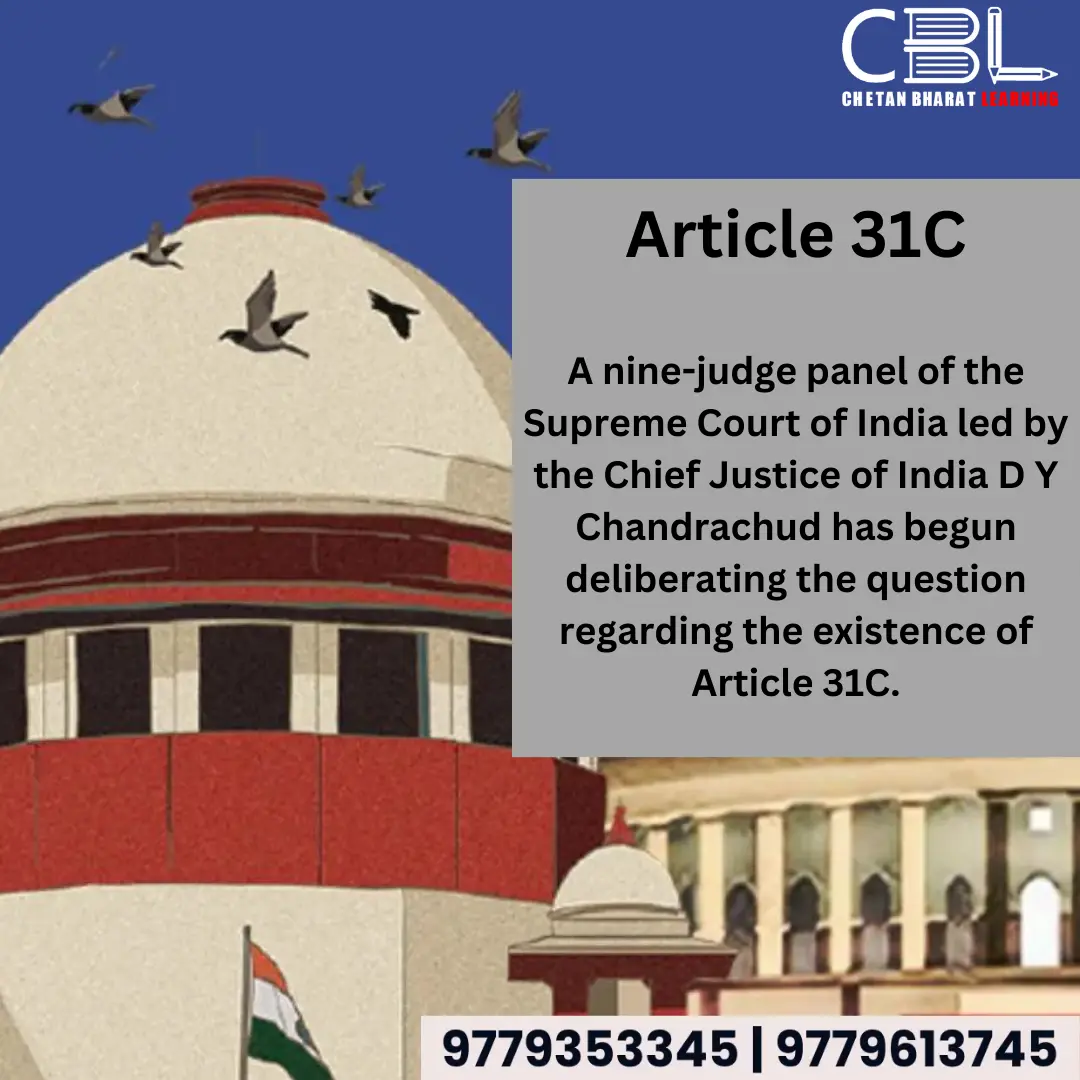Why in the news?
April 23, 2024: a nine-judge panel of the Supreme Court of India began deliberating on the interpretation of Article 39(b) of the Constitution.
The central issue under consideration was whether Article 39(b) falls under the Directive Principles of State Policy (DPSP). It permits the government to intervene in the ownership and redistribution of private properties by labelling them as “material resources of the community”.
What is Article 31C?
- The 25th Amendment to the Indian Constitution in 1971 introduced Article 31C. It partly came as a response to a Supreme Court ruling regarding bank nationalisation.
- It aims to protect laws that enact the principles outlined in Article 39(b) and 39(c). Article 39(b) and (c) focus on distributing material resources to prevent the concentration of wealth.
- Primary purpose of the Article: to prevent such laws from being challenged on the basis of violating the rights to equality and freedoms guaranteed under Article 14 and Article 19 of the Constitution.
- Essentially, it provides a safeguard for laws aimed at socioeconomic welfare from being invalidated due to claims of infringement on fundamental rights.
Journey of Article 31C
- The Kesavananda Bharati case in 1973 established the doctrine of the “basic structure” of the Constitution, prohibiting amendments that fundamentally alter this structure.
- As a result, the Supreme Court struck down the last part of Article 31C, which prevented laws from being challenged in court.
- This allowed for judicial review of laws enacted to implement Articles 39(b) and 39(c) to ensure alignment with their principles.
- In response, Parliament passed the 42nd Amendment Act in 1976, extending the protection of Article 31C to all directive principles outlined in Part IV of the Constitution.
- Aim of this expansion- to prioritise directive principles over fundamental rights like Articles 14 and 19.
- However, in 1980, the Supreme Court, in the Minerva Mills case, struck down clauses 4 and 5 of the amendment, asserting that Parliament’s amending power was not absolute and could not override the Constitution’s basic structure.
- This decision raised questions about whether Article 31C was entirely nullified or if it reverted to its pre-Kesavananda Bharati status.
Arguments regarding Article 31C
- People have raised doubts about the validity of Article 31C because it has undergone numerous amendments and faced legal challenges.
- The Kesavananda Bharati case: Amendments invalidated parts of Article 31C.
- The Minerva Mills case further limited Parliament’s amending power. It raised doubts about the survival of the expansions to the Article made under the 42nd Amendment.
On going case in the SC
- Currently, the Supreme Court is reviewing Article 31C to address constitutional uncertainties, particularly its application in property laws.
- The SC is reviewing a challenge to Chapter VIII-A of the Maharashtra Housing and Area Development Act, 1976 (MHADA).
- This chapter, enacted through a 1986 amendment, permits the government to acquire “cessed” properties in Mumbai upon occupants’ request.
- The acquisition is justified under Article 39(b). The Article emphasises the distribution of “material resources of the community” to serve the common good.
Implications and Future Directions:
- The Supreme Court’s decision on Article 31C will significantly impact the equilibrium between Fundamental Rights and Directive Principles. It will especially impact the law regarding private property rights.
- The ruling will determine the legal framework governing socio-economic reforms. It will also determine the level of judicial oversight over laws designed to enact these reforms.


Leave a Reply
You must be logged in to post a comment.